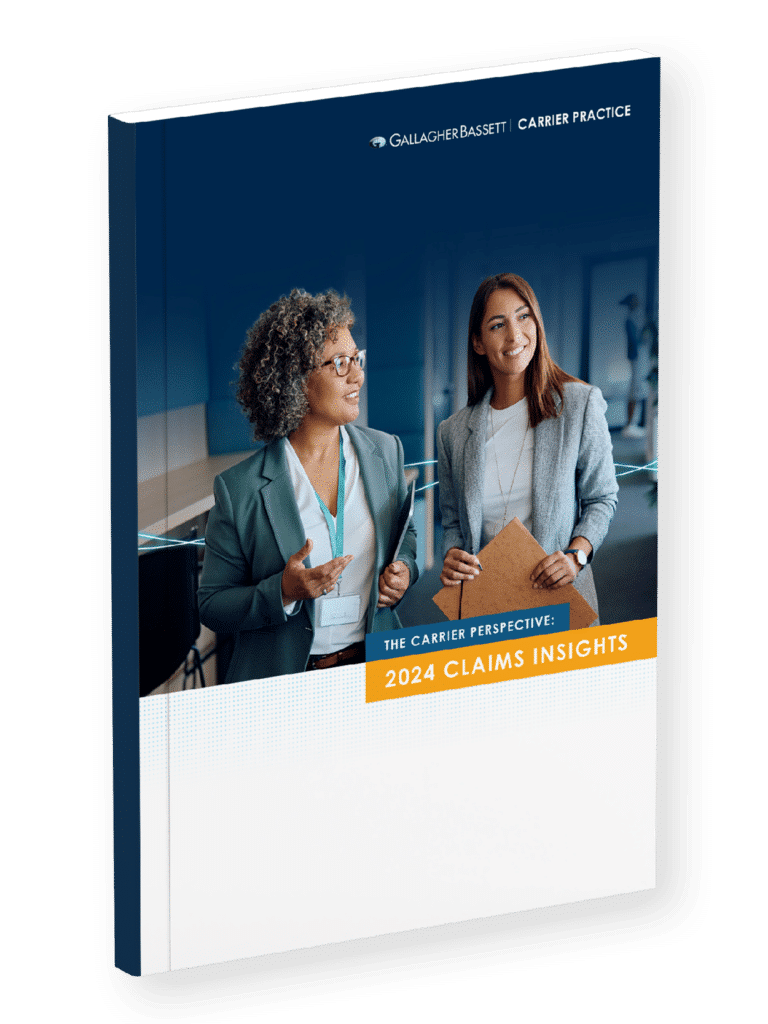Reinsurance solutions for legacy liabilities are not reserved for companies winding down operations and closing their doors to new business. Creative solutions are key for those in the “live to legacy” market, as well as for run-off consolidators.
Gallagher Bassett’s Jon Stambaugh, Senior Vice President, Carrier Practice, had the opportunity to sit down with Andrew Rothseid, Head of Legacy Solutions at sister company Gallagher Re, to discuss legacy market predictions for 2022 and beyond.
Jon Stambaugh (JS): You have had a long career in the global insurance industry in a variety of legal, management, consulting, and corporate governance positions. Can you describe your role at Gallagher Re?
Andrew Rothseid (AR): My role at Gallagher Re is focused on developing the company’s legacy solutions practice, which entails consulting with our clients on opportunities to release trapped capital, reduce reserve exposure and deterioration, control administrative expense, and free up management time. A financial impact of COVID-19 has been the increased use of reinsurance across the global insurance industry. Carriers and corporations—with their own captive vehicles or self-insured retentions—rely upon experienced brokers with market-leading expertise. Gallagher Re is ideally positioned to serve various industry needs. I am also excited to be working with the broader Gallagher organization to provide effective, comprehensive solutions for legacy and other nonperforming lines of business.
JS: Gallagher Bassett (GB) has been involved in the Association of International Reinsurance and Run-Off Companies (AIRROC) for a few years as a corporate partner and member. You have been an active participant in AIRROC since its inception and received its “Person of the Year” award for your design and implementation of the GTE REinsurance closure plan in Rhode Island.
We have observed the need for both traditional and creative solutions with respect to exiting books of business that have become unprofitable due to social inflation, nuclear verdicts, increasing medical costs, and other issues. What are some of your observations about how balancing different solutions can produce positive results?
AR: I have worked with liquidators, regulators, investors, and carriers, helping them design and implement restructuring plans, and achieve finality for legacy exposures. Virtually every insurer that is actively underwriting new risk has problematic or discontinued lines of business or contractual relationships.
While there is no single solution for the myriad of issues facing carriers, there are a variety of frequently used tools, each of which require a focus on capital efficiency and can benefit from the use of third-party reinsurance to support balance sheet liabilities. In recent years, the U.S. has seen an expansion of regulatory activity—through insurance business transfer and division legislation—to respond to these industry dynamics.
We have also witnessed large third-party capital investment in businesses that consolidate, acquire, or reinsure, these run-off operations. These consolidators face the difficult task of evaluating future exposure—and managing the diverse exposures acquired—areas where the Gallagher Bassett Carrier Practice excels.
JS: That’s true, Andy. Our Carrier Practice is a valuable resource for both consolidators and carriers. We help clients evaluate exposures, review reserves as part of a triage program, and take over the claims for their duration.
As you would imagine, understanding the jurisdictional nuances and concerns of multiple parties involved in the claim as they relate to COVID-19 is critical. And, since few cases have made it to trial, we have invested time and resources to enhance our mediation strategies to the benefit of our clients.
AR: That is precisely where Gallagher Re comes into the picture. We work with our clients to develop reinsurance solutions for discontinued or problematic exposures. These solutions assist in insurance business transfer (IBT), corporate division, the resolution of a due diligence dispute in a prospective legal entity sale, or to simply address adverse reserve development. Examples include situations where public companies become private, where existing companies place a portion of their business into discontinued status, where a commutation and novation are needed, and where a rating agency or regulator is evaluating the ongoing strength of an organization.
The bottom line is that we are still in a low-interest-rate environment. Cash tied up in legacy reserves continues to rise, and there is a drain on value compounded by the volatility in liabilities and the resulting impact on capital demands. As a result, boards, shareholders, and regulators are putting intense pressure on insurers to focus on capital efficiency and clear away legacy liabilities.
JS: Carriers are primarily concerned with the prompt investigation and satisfaction of claims. What do you think is critical for carriers to understand about legacy solutions?
AR: The creditability of the insurance product is predicated by the consuming public’s confidence in the claim adjustment process.
Claims professionals, such as GB, serve the industry and the consuming public through their efficient and appropriate adjustment of claims. With rare exception, legacy liabilities do not improve with age. As a former colleague once told me, “Run-off claims are not fine wine. They do not improve over time.”
Legacy liabilities are a strain on management time, corporate resources and expense, and shareholder value. The efficient administration of these types of liabilities is a vital capital-management tool that each carrier should master to protect its current and prospective policyholders, shareholders, and employees.
JS: As a third-party claims administrator, GB understands that successful run-off requires a careful balance of interests and perspectives among policyholders, insurers, and regulators. As you know, the path to effective resolution has several objectives, including honoring valid policyholder obligations, adjusting liabilities fairly, and correctly preserving assets, capital, industry rating, and stakeholder value, as well as controlling and reducing expenses. Through GB’s experienced claims professionals and the use of extensive data accumulated over nearly 60 years in business, we can help our clients achieve superior outcomes.
AR: Leveraging experienced claims professionals for file resolution is critical to the timing, quality of structuring, and efficient management of the run-off resolution in determining the amount of value that can be released. As reinsurance brokers and intermediaries, we review who is handling those files and how—and when—the exposures are resolved. Effective claims management is critical to ensuring that underlying data is clean and that reinsurance is not purchased to cover claims that can and should be resolved easily.
JS: As we reach the end of the first quarter, the insurance industry is experiencing challenges from emerging global conflict, sanctions, and ongoing supply chain issues because of COVID-19. What are some of your predictions regarding the rest of 2022?
AR: The insurance industry has focused its attention on reserve development and deterioration, operating expense, and combined ratios throughout COVID-19.
The pandemic was not a moment of epiphany for the insurance industry. Instead, it was a moment of introspection that forced many insurers to concentrate on efficient capital management.
Solutions for legacy liabilities—particularly those sitting on the balance sheets of active underwriting entities—were at the forefront of those capital-management efforts. Similarly, the regulatory community in the U.S., the U.K., and throughout the world became increasingly aware of the need to support carriers looking for measured and responsible solutions for these problematic exposures. It is likely that these trends will continue in 2022 and beyond.
Consequently, insurers will continue to rely upon proven capital solutions, including efficient claims management, third-party reinsurance to ease balance-sheet strain, and collaboration with third-party capital to support ongoing operations.
Understanding the jurisdictional nuances and concerns of each party involved in a claim is crucial. Outsourcing to a third-party administrator like Gallagher Bassett, who is experienced in legacy solutions, supports carriers to evaluate exposures, review reserves, and reduce the strain of claims management.
We help clients evaluate exposures, review reserves as part of a triage program, and take over the claims for their duration. As you would imagine, understanding the jurisdictional nuances and concerns of multiple parties involved in the claim as they relate to COVID-19 is critical. And, since few cases have made it to trial, we have invested time and resources to enhance our mediation strategies to the benefit of our clients.







